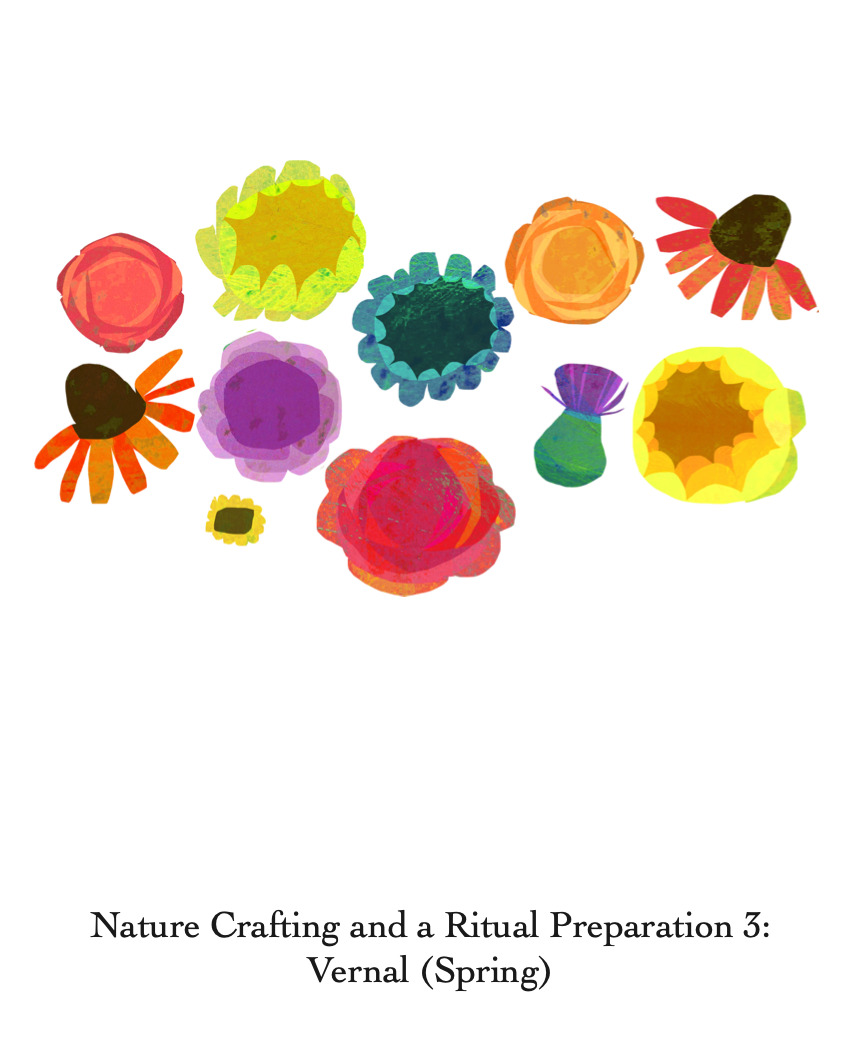A Joyful Path, Year Three – Week 27: Spring Nature Crafting And Ritual Preparation
For Classroom or Home School

Week 2: Spring / Element: Water
Nature Craft and Ritual
Preparation 3: Vernal (Spring)
This session happens approximately one class before the Vernal Equinox.
Four times during A Joyful Path, Year 3, the lesson plans pause for two back-to-back sessions: Nature Crafting and a Ritual Celebration to honor the gifts of the season at hand. The Nature Crafting session provides ways for the children to learn about, and get ready for, the pending holiday, as well as to honor the respective gifts of four elements: earth, air, water and fire. The intention is to generate excitement and genuine anticipation for the upcoming ceremony and celebration. The Ritual Celebration offers a simple liturgy to co-create with the children, and your greater community, as desired. This happens at the following times:
Dates for the Northern Hemisphere:
- Autumnal (Fall) Equinox (September 19-22, date varies)
- Winter Solstice (December 20-22, date varies)
- Vernal (Spring) Equinox (March 19-22, datevaries)
- Summer Solstice (June 20-22, date varies)Dates for the Southern Hemisphere:
- Autumnal (Fall) Equinox (March 19-22, date varies)
- Winter Solstice (June 20-22, date varies)
- Vernal (Spring) Equinox (September 19-22,date varies)
- Summer Solstice (December 19-22, datevaries)What is the Vernal (Spring) Equinox?
The Northern and Southern Hemispheres experience the seasons in polar opposition, of course, and the exact dates of the Equinox and Solstice fluctuate slightly within a one to three day period. You may wish to look up the exact date for your year and location. In the Northern Hemisphere, the Vernal (Spring) Equinox takes place in March when the Sun crosses the equator line and the planet tilts North (toward the Sun). In the Southern Hemisphere, it is the opposite. When we (in the Northern Hemisphere) celebrate the beginning of spring, our siblings in the Southern Hemisphere celebrate the beginning of autumn.
The Vernal Equinox marks the midpoint between the Winter Solstice and the Summer Solstice. Just like the Autumnal (Fall) Equinox, on this day, Earth’s axis sits perfectly in balance, offering equal parts of daylight and darkness.
Indoor lighting, heat, air conditioning and other technology buffers most of us from the extremes of either Solstice. And yet, it is important (spiritually, physically and psychologically) that we notice the incremental changes that are taking place. Notice the changing light and temperature, and the changing behaviors of the plants, trees and animals.
Honoring, celebrating and thanking Earth for Her seasons and cycles began with the earliest humans. Ancient Earth-centered rituals did this so well, of course, that most of our present holy days and celebrations can be traced back to Indigenous or pagan practices.
Preparation for Nature-crafting & Spring Equinox Ritual Celebration
* Globe, beach ball or other ball.
* A table, other surface or box to create an altar (this can be the same space you have used for previous altars).
* You will also want an altar cloth (spring- colored scarves or cloth napkins work well) and the altar candle used in all the rituals so far.
* Other altar items to bring in basket/ box: crystals, flowers, decorated eggs, bunnies, seashells, seeds, etc.
* A large bowl/small bucket of water with a few drops of dish soap and enough rags or sponges for each child (paper towels are also ok but less environmentally friendly).
* Dry erase/chalkboard, dry erase markers/ chalk or flipchart paper (or other large sheet of paper) for group brainstorming. Save the list of brainstorming for the ritual next time.
* See instructions and supply list below for the nature craft this season. If you have access to an electric burner or stove with kids, it is fun to make the craft together, start to finish. It will take thirty minutes and may mean other suggested activities for this class do not happen. If you prefer, or a burner isn’t easily accessible for class, prepare the rosewater concentrate the day before and bring it to class. In your time with the kids, you will dilute the concentrate and fill bottles together. Bring a few petals or a rose for the kids to see and smell. This will help them appreciate the before and after in the crafting process.
* “Hello, Sun!” Sun Salutation video https:// www.youtube.com/watch?v=5_tkAzN0Pw4 OR “Peaceful Pause” photo instructions on the final page of this lesson.
Be sure to click here to download the Teaching Introduction and Instructions.

